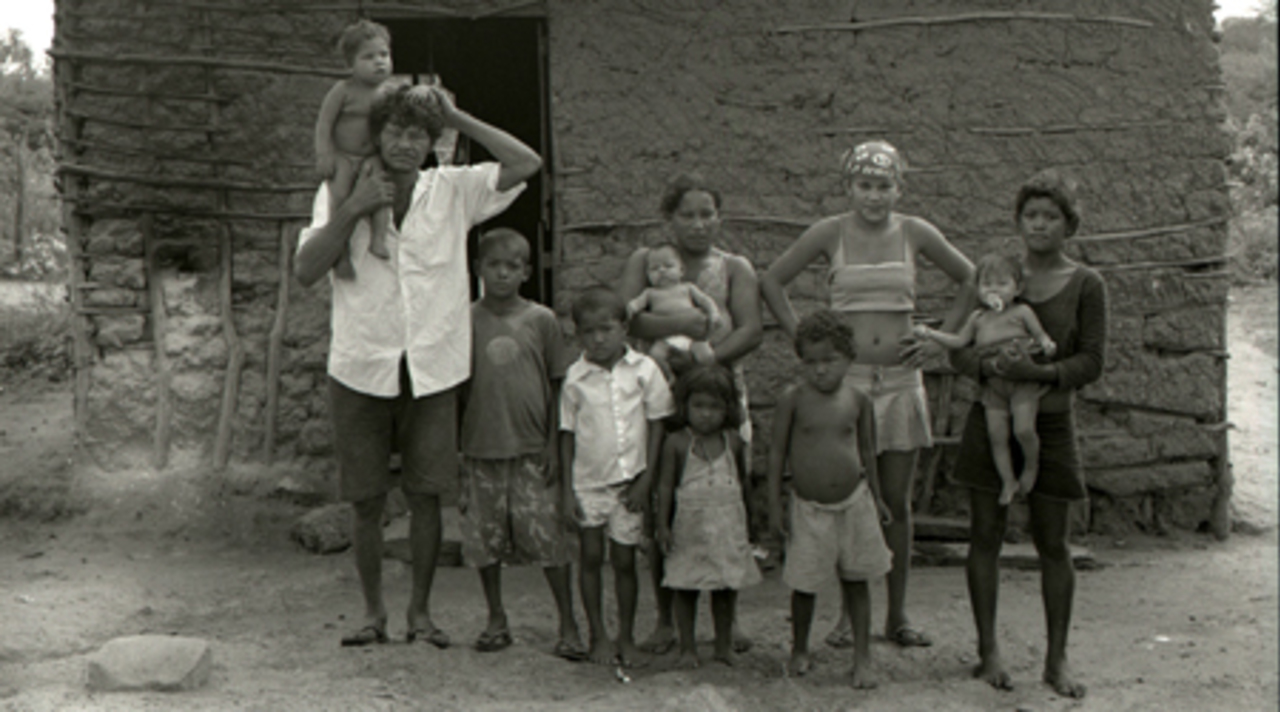By Chlotrudis Independent Film Society
Rating: 3.5 cats
Director: José Padilha

Country: brazil
Year: 2009
Running time: 110
IMDB: http://www.imdb.com/title/tt1262985/
Bruce says: “Garapa is a mixture of sugar and water, heated so that the sugar dissolves thoroughly. Sadly, it is the main source of nourishment for many children in South America and Africa, children whose parents cannot find jobs to earn money to buy food or do not have tillable soil to grow food of their own. Director José Padilha (BUS 174, ELITE SQUAD) begins his film by stating there are two ways to die of starvation: not eating is quick and the more obvious; malnutrition is slower and much more common.
“Rather than toss a barrage of statistics at the viewer, Padilha has opted to visually tell the story of four families who struggle to keep themselves alive. The children, of course, are the most at risk for malnutrition which contributes to debilitating or life-ending disease. One family lives on the outskirts of Fortaleza, a city of over 4 million in Northeastern Brazil. Two other families are in a small village and the fourth family lives in a remote rural area.
“The stories are similar: babies covered with insect bites; long days where the entire family has nothing to eat; living quarters with no toilet, no water tank and no sink; arid land on which nothing will grow; a nationwide Zero Hunger program, a high-profile project of Brazilian President Lula that helps put food on the table several days a month, does not curb malnutrition resulting from days of having no sustenance other than garapa. What emerges during the course of the documentary are shocking statements emanating from the families. One twenty eight year old mother claims never to have had three meals in one day. One woman when asked why she has eleven children shrugs and says, ‘God gives.’ Social programs require applicants to have papers but those born illegitimately don’t have them; one woman doesn’t even know how old she is.
“GARAPA is filmed in black and white giving the stark settings and bleak families the look of the depression era photographs of Walker Evans and Dorthea Lange. At times it is difficult to keep the families straight since the same themes crop up over and over. Basic rules of hygiene are non-existent. None of the subjects have any or much education. Work is impossible to find for the men. There is little industry and few people that can afford to pay them for day labor. Most men resort to drink which means money that is desperately needed to keep the children alive goes towards alcohol. In almost every case the men sit around and stare blankly into space while the women do all the household work and care for the children.
“In the director’s own words GARAPA is a difficult film to watch. It is shocking to hear that 950 million people in the world are living lives similar to the four families Padilha has chosen for the film. Padilha is committed to using his art as an agent for social change and he deserves an abundance of credit for his impressive work. Profits from GARAPA will go to the four families who were not compensated during the filming. 3 1/2 cats
“GARAPA screened at the 2009 Tribeca Film Festival”
